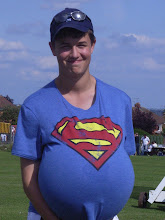
In this Lesson we learnt about Camera angles nd when each one maybe used!
First we learnt about the simple and common shots such as the Long , Medium and Close up shots.
Then we went onto look at more advanced shots such as:
- Shot reverse shot which used for dialogue, the main focus is on the person talking, the camera is usually positioned over the shoulder of the person being spoke to, this is a affective shot because it makes you feel part of the conversation.
-High angle Shot, these shot connote power over the object you are viewing, traditionally women have been used for this shoty to make men look more powerful
-Low angle shots are designed to make a character look more powerful.
-Tracking Shot is when the camera is parelelle to the action and follows the subject or action.
- Establishing Shot, this is usually the first shot in a scence establishing where the action is taking place.
We also learnt about Editing Techniques such as:
-Continuity, which is when the shots are edited so that the film flows from shot to shot.
-Montage, this is a style of editing that has two functions. First is a highly political soviet style of the 1920's which sought to create a new meaning out of seemingly unconnected shots. The Audience will be very aware of the cuts. Secondly there is "the hollywood montage" In classical hollywood cinema a montage sequence is a short segmant in a film in which narrative information is present in a condensed fashion.
-Transition, This is a term for how an editor moves from one shot to another. The use of an inappropriate transition can destroy the mood or pace of a Scene.
- Cross Cutting and parrallel editing, Editing that alternates shots of two or more lines of action occuring in different places usually simultaneously.
-Dissolve, this is a transition between two shots during the first image disappearing the second image gradually appears.
Wipe- A transition between shots in which a line passes across the screen, eliminating the first shot, and replacing it with the next one.

No comments:
Post a Comment